The below article is actually a chapter I wrote for a great collaboration ebook put together by Pearler. I would highly recommend checking out the entire eBook (for free of course) which you can grab here.
“A dollar saved is better than a dollar earned”
We’ve all heard that one before. The ability to save more than you earn is a fundamental principle upon which FIRE is built.
Hands-down the most important step for reaching FIRE is how much of your paycheck you can keep and invest.
You cannot earn/invest your way out of bad money habits. It will eventually catch up with you no matter how much money you make. If you’re spending more than you earn, you’re going to be broke. It’s just simple mathematics!
It’s sorta the equivalent of trying to outwork a bad diet and expect results in the gym. In fact, there are so many parallels between good financial habits and being fit and healthy it’s uncanny. Most health/fitness experts would agree that your diet probably plays the biggest role in keeping your body happy. The other two major players would most likely be exercise and sleep. If you’re nailing all three of those, there’s a pretty good chance your body is feeling awesome.
Savings is to FIRE, what eating the right foods is to living a healthy lifestyle.
And if we follow this little analogy a bit further we might conclude that…earning money in FIRE is equivalent to or around the same level of importance as exercise when it comes to health and fitness. And maybe we can put getting a good nights rest at the level of investing.
It’s not a perfect one for one comparison but it makes for a good metaphor so let’s keep rolling with it.
I’d wager that 90% of FIRE content is either about saving money or investing. But we seldom read how to earn more money even though it has astronomical benefits when implemented correctly. It’s true that FIRE is income agnostic, two people with a savings rate of 65% will both reach FIRE in around 10 years even if one earns $60K and the other $400K.
But there comes a point of diminishing returns for both saving money and investing.
The purpose of this article is to explain how beneficial it is to spend more time and energy increasing the amount of $$$ that flow into your accounts. Anyone who is on this path is already doing some form of exercise (earning money) but if you can look past your standard crunches and pushups you’ll discover there are gymnasiums out there filled with weird and wonderful machines that provide all types of workouts. And when you combine a great diet with a dialled in training routine that works best for you, the gainz can be off the charts.
BFYB Factor
The aim here is to illustrate just how much of an impact increasing your income (even a tiny bit!) can have on your journey towards FIRE.
Let’s try and apply the same metric to the three most important focus areas IMHO when it comes to reaching FIRE.
- Save more than you earn
- Increase how much you earn
- Invest your savings
We’ll call the metric BFYB (bang for your buck).
BFYB = The amount of effort required to improve a focus area
Let’s look at our first focus area (save more than you earn) and re-establish why it has the best BFYB value.
Increasing Your Savings Rate
Using The Australian Financial Independence Calculator we can plug in Joe Smith’s journey towards FIRE starting from $0.
We’re assuming he is a single 30-year-old Sparky from Brisbane who owns his 3 bedroom home (no mortgage), works 38-40 hours a week, doesn’t have kids and all the below numbers stay constant over the next 30 years to make the modelling super simple.
Ok, so an Australian who earns $80K with a savings rate of 30% can retire in 21.2 years. Not too shabby.
A 30% savings rate is already way above the average but let’s just assume Joe, whilst obviously a diligent saver already, is living a pretty normal consumerist 21st-century lifestyle with a heap more fat to cut. I don’t think it’s unrealistic or even that hard for him to go from a 30% savings rate to 40% given his circumstances above. The difference between 30%-40% is $5,538 a year or $106 week. I would almost guarantee that 90% of Australians spend more than $106 dollars a week on things they don’t need or even want half the time (myself included). Optimising big-ticket items like housing, transport and food would almost certainly save a whole lot more than the $106 a week we require for this example.
Anyway, if we bump the savings rate up to 40% we wipe off 4.5 years!
Everyone’s circumstances will vary but the effort required in my guesstimation for Joe to increase his savings rate 30% to 40% is rather small and the BFYB is high.
This is what we want. Low effort, high reward.
And it’s why focusing on your savings rate is absolutely the best way to decrease the amount of time towards FIRE… up to a certain point.
There comes a point of diminishing returns where focusing on your savings rate will not yield a good BFYB and the hard part is that it’s different for everyone because of circumstances. I can only speak for ourselves but this is what our savings rate BFYB chart looks like:
Currently, we can pretty much save close to 40% of our after-tax income without breaking a sweat. That means no sacrifice or comprising on anything. The effort for us to save 40% is almost the exact same as saving 10%. But the effort required to maintain a savings rate of >60% is when things start to change. For us to optimise our lifestyle further and squeeze out a few more percentages is astronomically harder to do when we start to get around the 65%-75%+ range. Don’t get me wrong, we could do it. And that would speed up our journey to FIRE… but at what cost?
If I can draw from our earlier metaphor of our savings rate being similar to a diet, we could say that cutting out junk food during Monday-Friday and making sure you eat some sort of leafy greens every day is a realistic goal with huge health benefits. But if we tried to never drink alcohol or eat Macca’s ever again, firstly we might be setting ourselves up for failure and secondly, whilst being the healthy option, it’s not going to have as big of a health benefit as the first goal. There are diminishing returns for eating healthy just like there are diminishing returns for improving your savings rate.
Increasing Your Income
This is the focus area that doesn’t get enough attention.
Increasing your income has a direct correlation with your savings rate but for whatever reason, a lot of people never put in the time and effort to improve it. There’s so much low hanging fruit which doesn’t really require a whole lot of effort but has a high BFYB value.
Let’s look back at Joe Smith from above but change one thing. Instead of him saving $5,538 a year, let’s have him earn an extra $5,538 (after tax) a year and see what happens.
Joe increased his after-tax income by $5,538 which in turn wiped off 2.7 years!
BFYB: Really good
We’re going to be talking about the low hanging fruit later on but if I’m being honest, Joe could easily make an extra $5,538 (after tax) purely from giving up more of his time. If we assume he’s making an after-tax hourly rate of $28, he would only need to put in an extra 197 hours worth of work over the year. And that’s not even factoring in overtime or weekend rates. An extra hour for 197 working days a year is really not that much.
Some of the stories I’ve heard first hand from young London bankers is absolutely mind-boggling. Think 70-80 hours per week… and work on weekends is to be expected!
2.7 years is not as good as our savings example above which wiped out 4.5. But if we combined them, we get epic results!
Improving our savings rate and increasing our income by the very same amount has annihilated 6.53 years of working.
Now we’re cooking with gas!
But just like our savings rate, there are diminishing returns in the pursuit of increasing your income. And I keep coming back to circumstances but unfortunately, it’s very much a circumstantial question when we start talking about this focus area because we all aren’t on an even playing field.
Below is my personal increasing income BFYB chart:
Let me explain what this means because it’s important.
Let’s say I’m unemployed next year (which is what’s most likely going to happen when we move back to Australia) and my salary is $0 (ignoring any investment income of course). I’m scanning through the classifieds looking for my next job, which, for this example will be the sole source of my income.
For my circumstances personally, it doesn’t require any extra effort for me to land a job paying $100K as opposed to around $35K annually. I don’t want to sound overconfident but I have a certain set of skills and experience that the market is willing to pay me and I’m 99% sure I could land a job paying close to $100K no worries. In fact, I’d probably have a harder time getting my old job back at Coles if anything. Beyond $100K is when the effort required starts to increase and the BFYB value starts to go down.
Remember, BFYB = The amount of effort required to improve a focus area.
The effort required to earn a salary past $100K starts to increase a lot and for me personally, the extra effort doesn’t justify the extra income at around the $130K-$150K mark. Beyond that, there’s too much sacrifice with not enough gain. Too many responsibilities and work-related stress that I don’t feel is justified for the extra $$$. You may have certain skills and experience where earning $150K is actually quite easy and no different (in terms of effort) than earning $100K.
If we look at the ABS data from 2018 the median income for a full-time employee in Australia is $76K a year. If we adjust for two years of inflation we can round it off to 80K and we now have a benchmark.
$80K a year is the standard form of exercise for full-time Aussies. One light jog and occasional push-ups weekly would probably put you in the average to above-average category of exercise in Australia as sad as that is.
If you’re earning under $80K a year and have already optimised your expenses, you may be in the position to grab some really low hanging fruit and increase your income for an excellent BFYB return.
Adding in some resistance training 2 hours a week is such a small amount of effort that has an incredible return. Not only will you become healthier and stronger, you’ll potentially save yourself a lifetime of injury and illness that’s so common in our sit down all day 21st-century culture. Cardiovascular and resistance training has shown to help with sciatica, pelvic tilt, back pain, heart disease, diabetes etc. I have always considered myself a pretty active person but even I had hip issues 3 years after starting full-time work which I 100% attribute to sitting down all day and not stretching my hip flexors or strengthening my glutes. This hip issues crept into a lower back pain issue and before I knew it, I was going to the physio a few times a month. It didn’t take longer than a few weeks of specific stretching and strengthening exercise to completely resolve all of my issues and I continue parts of that program to this day nearly 10 years later.
You don’t need to jump into a 5X5 strength split or start yelling “Yeah buddy…Ain’t nuttin’ but a peanut!” after every rep in the gym. Three focused 45-minute sessions a week offers great health benefits just like spending a bit more time increasing your income can wipe years off your FIRE journey!
Improving Your Investment Returns
And now we’ve come to the most talked about, most analysed… most overrated focus area.
Investing!
I want to bring up two quotes to set the tone for this focus area.
“If investing is entertaining, if you’re having fun, you’re probably not making any money. Good investing is boring.” – George Soros
“There seems to be some perverse human characteristic that likes to make easy things difficult.” – Warren Buffett
I am so guilty of the second quote. When I first discovered financial independence I was convinced that there’s some sort of magic formula that these rich guys must be using to get ahead. It’s part of the reason I started investing in a trust. It was like this complicated black box with all these advantages that only the rich guys understood and used. I wanted in on the secret and did my research hoping to stumble upon the golden goose. While there are some benefits of investing within a trust, I must admit that I was lured to its complexities and perceived mysteries (for whatever reason). It took me years to fully appreciate the power of simplicity and if I could start again, I would have never bothered with the trust.
I feel so many FIRE n00bs fall into the same trap. They go looking for a magical formula that simply does not exist. And even if it does, it’s almost certainly locked away in a secure blockchain quant investment hedge fund somewhere.
Here’s the deal, you can absolutely optimise your investment results up until a certain degree with barely any more effort involved. I’m going to ignore inflation, risk appetite and investment horizons for a second to make the point.
Investment returns have historically fallen around these marks:
0% – Storing your money in a shoebox under your bed
2% – HISA
3.5% – Bonds
7% – Real estate
8% – Shares
You can argue back and forth about how those numbers were gathered and what methodologies were used but it doesn’t really matter.
Realistically, any Aussie out there can achieve those returns rates in those asset classes without an economics degree. Index investing opened Pandora’s box and enabled the average Joe to grab a piece of the market without needing to spend the time researching and analysing financial statements.
Diversification and low management fees provide the best BFYB when it comes to this focus area. Everything else has such minute benefits that it’s laughable so many people spend so much time and effort trying to see which ones better.
To demonstrate this here is our BFYB chart for investment returns
So basically we can get up to around 8% without much effort required. It’s always good to put the time and effort into understanding the asset class but theoretically, any Joe Blow could dump their money into a diversified index fund like VDHG and get ~8% over the long term.
I don’t know any assets class where you can get a better return without extra effort. There’s plenty of ways to improve your return on investment. I sold my first investment property and calculated an after-tax annualised return of 36% but the number of extra hours I put into that investment was the equivalent to another part-time job.
Newbies to FIRE and investing don’t really understand just how hard it truly is to beat the market consistently over a long period of time (20+ years). There are people who can do it, I’m not saying it isn’t possible. But the amount of effort and skill that is required to actually discover alpha year after year is something only a very few incredibly skilled people have managed to achieve.
We’ve all heard the famous story of Warren Buffett betting a $1M bucks against 5 hedge funds that a simple index-tracking ETF would outperform them over an eight-year period. Not only did he win that bet, but it wasn’t even close.
But let’s just entertain the idea that you’re an outlier. You possess incredible skills and techniques far beyond most active traders and hedge fund managers all around the world and you’re able to consistently beat the market.
How much better off would you be if you were able to outpace the market by a whopping 100 basis point (1%). 1% doesn’t sound impressive but if someone can beat the market by 1% over a long period of time then you’re most likely going to make more money in a hedge fund picking stock than you are at your day job. Your skills are extremely valuable.
We’re going to pretend that you keep this incredible skill to yourself and only use your god-given talents for your personal share portfolio. How much of a difference would 1% actually make?
Let’s find out.
Even using our top tier investing prowess we only managed to wipe off 2.3 years which was actually the worst result compared to saving $5,538 (4.5 years) or earning an additional $5,538 (2.7 years).
BFYB: Bad
Think about how much time and effort some funds put into research for investing. It’s a full-time job with an army of analysts and advisors all crunching numbers, creating models and using the latest predictive methods in the odd chance that they can justify their hefty management fees. And most of these funds don’t even beat the index when fees are accounted for.
What hope in hell do the rest of us have?
The example above used a huge 1% difference over nearly 20 years.
How many times have you seen someone ask about A200 vs VAS on the internet? It’s gotta be one of the most discussed and analysed topics within FIRE communities. The difference in management fees between these two funds is 0.03%…
Let me say that again. 0.03%
They do track different indexes (ASX200 vs ASX300) and do you know what the difference has been between those two indexes over the last 10 years… 0.04%
So maybe… just maybe those two funds might return a difference of +-0.1% over the long term.
10 basis points of difference is your reward for correctly picking the better performing ETF over that time period.. and that’s assuming you’re even able to use skill to pick the one that’s going to perform better (which you almost certainly won’t be able to do).
BFYB: Horrendous
A200 or VAS?
A200+VGS or VAS+VTS+VEU?
IVV or VTS?
AFI or VAS?
LICs or ETFs?
VDHG or create my own?
Most of these arguments don’t make a huge difference. It’s really important to understand the key concepts around management fees, diversification and why index investing works. But just understand that if you’ve got one of the above combo’s, you’re already more diversified and paying lower fees than most Australian investors to begin with.
The basic investing principles for Australian FIRE is to build a low cost, diversified share portfolio mainly made up by ETFs/LICS. You want to buy consistently no matter what the market is doing and grow your snowball to a point where it’s passive income can fund your lifestyle.
There’s going to be a 100 different flavours of that ice cream but once you have those basics down pat, the bulk of the work is done. You can always tweak and improve your portfolio to suit your circumstances but honestly, if you’re trying to reach FIRE faster and think that crunching numbers in Excel for 10 hours a week is going save you years of working, you might be in for a rude shock!
Keep your investing simple and boring. Use your precious time optimising your expenses and working on ways to increase the amount of money that flows into your account because IMHO, focusing time and energy on savings and increasing your income has the best BFYB returns.
Different Ways to Increase your Income
I hope after reading the above you can now appreciate just how underrated increasing your income is. The saving rate is held in high regard within the FIRE community thankfully, so there’s not much to add there.
But my goodness does investing get way too much of the limelight. It’s largely out of your control too. Other than choosing your diversification levels and sticking to a low-cost fund, you’re very limited to how much you can improve the results.
When it comes to increasing your income though, the complete opposite is true. The harder you grind the more money you will make! And the more money you make, the higher your savings rate will be (if lifestyle inflation doesn’t get ya)
So let’s jump in to see how we can improve our crunches and pushups and maybe head over to the dark corner of the gym, away from the treadmills and cross-fitters… the weight room!
Ask For A Raise
We’re going to start by improving our current workout (salary job).
One of the easiest and most low hanging fruits on anyone’s list should be to simply have a conversation with their boss about their salary and ask for a raise if they think they deserve more money.
How many times have you heard about someone complaining for years that they’re underpaid but never actually taking the action of setting up the meeting to discuss their pay? I’m not saying this will have a 100% success rate but more often than not, it will start the process of you either getting more benefits or creating the plan for your next raise or bonus.
You probably want to approach the meeting with some sort of reasoning like citing average incomes within your industry or comparing the work you do with someone else that’s being paid more.
BFYB: Great
Hardly any effort with the potential to add thousands extra to your accounts for years to come! No real risk either and it’s not like you have to learn something new.
Change Jobs Regularly
Asking for a raise or putting your head down and bum up climbing the corporate ladder is a noble way to jump the food chain and reap the rewards. But the sad truth in my experience is that loyalty to a company (or business for that matter) is rarely rewarded.
Your utility provider doesn’t offer a better deal when you’ve been a loyal customer for 10 years. It’s only when you leave do they all of a sudden roll the red carpet out.
If your goal is to make the most money in your field, changing jobs every 2-3 years is the best way to do it.
Be bold, be confident. Apply for positions beyond your capabilities. Back yourself to get the job done after you land it.
Fortune favours the bold!
I’m not saying to lie your way to a position only to fall flat on your face. Just understand that an ungodly amount of people are in jobs they were never qualified for or completely lacked the experience necessary to perform it at the start.
When I worked for the government back in Australia, we would engage with consultants all the time from various companies who always charged an obscene day rate to perform projects. Think $1,000+ a day. I worked directly with a lot of these consultants on the technical side and it always struck me as odd when they clearly didn’t know a whole lot. Here we were, getting charged $1,000 a day and I would end up doing 30% of the work.
Fast forward 5 years and I became a consultant myself after picking up contract work in London. My second contract was at one of the big four global consulting firms who are widely regarded as having some of the best professional services networks in the world. And boy do they charge accordingly for that reputation.
I worked on client-side with a team of consultants but was the only contractor. Two of the team members were really junior. One was 18 months out of uni and whilst really smart and willing to learn, didn’t know a whole lot about the technologies we were implementing.
My day rate for that contract was a whopping £500. It was more than double my daily earnings from back home and I couldn’t believe that a company would be willing to pay me so much.
Well, you might have guessed that I was completely blown away when I found out that the consulting company who I was subcontracting for, was actually charging me out at their SC (senior consultant) rate which is a staggering £1,250 a day 🤯. Even at £500 a day, I was only getting 40% of the pie!
And now it made sense why all the firm’s partners were driving McLaren’s…
But here’s the point of the story… everyone on the team was also being charged out at £1,250 a day!
I mean… honestly. One of them barely knew anything. And it was at this point that I realised that companies will lie and exaggerate the skills and experience of their products/services in order to get the most amount of money they think they can get away with.
You should be doing the same!
Last point on this one, be prepared to move somewhere where your skills are in demand. This might mean international.
BFYB: Great
Side Hustles
Time to get out of your comfort zone!
The two tips above were focussed on improving your current situation. Everyone’s working out to some degree so it would make sense that we start by improving your running technique or buying training gear. But now I want to take you into that dark corner of the gym where you might not have been before. It’s not going to be easy and learning new things can be difficult. But I promise you that the benefits here are worth the effort.
I’d rather not bore you by listing every single side hustle I can think of either. I have personal experience in a few side hustles which I’d like to talk about but there’s really an unlimited amount of ways to bring in a little extra cashola.
Work a second job:
This one depends on how exhausted you are working your main job, but there’s plenty of people who work two jobs and cope just fine. Mrs FB used to do a bit of bar work on Thursday and Friday nights even though she didn’t need to. She worked with her sister and a few friends and half the time most of her friends were drinking at the bar (a small country town so not many other options lol) so she was sort of where she’d be anyway just earning money instead of spending it. A little bit of extra work equated to thousands of extra dollars in her account without too much effort involved.
The second gig can be anything too. Teaching piano, tutoring, Uber driver etc.
BFYB: Ok
Sell stuff:
One of my biggest pet peeves is throwaway culture. The amount of effort that went into digging something out of the ground, refining it, transporting it, manufacturing it, shipping it, storing it and to have someone finally buy/consume it… only for it to be thrown away in the trash not long after.
Utter insanity!
Never throw away something just because you don’t want it anymore. If it was once a good product, odds are you can sell it online to someone and recoup some of your losses. Hell, I even managed to sell my old pair of Nike’s for $30 once. Legit took me less than 10 minutes to list it. How many of you out there would be willing to work for $180 an hour?
At worst go down to your local Salvos and donate it. Chucking something that is perfectly fine in the trash is sooooo lazy, a bad financial habit and adds to humanities ballooning trash pile that mostly ends up in our oceans.
BFYB: Ok
Credit Card Hacking:
I’ve been credit card hacking for nearly a decade. In a nutshell, you sign up to new cards to take advantage of the signup bonus these CC companies offer and then spend the points on products, flights or convert them to cash. You can also pay for everything on the CC and accumulate points over the course of the year. A little bit of effort for a pretty decent bump IMO. The only risk is that you need to ensure you pay off the CC amount in full at the end of each month.
Oh, and some cards come with free travel insurance which can cost hundreds of dollars.
BFYB: Ok
Matched Betting:
Something I only discovered in 2019 after ignoring it for nearly 6 months because I thought it was a scam. The principles are very similar to CC hacking. The bookies offer you signup bonuses where you join with the caveat that you need to gamble the bet in order to access it. Matched betting is the mathematical approach for discovering arbitrage opportunities between back and lay bets. Or simply put, playing the bookies against each other to make money. When you do it correctly it’s mathematically impossible to lose but it’s a lot more complicated than CC hacking.
There’s a lot of low hanging fruit here for those who who want to put the time and effort into learning it. The two advantages that matched betting has over CC hacking is that firstly the amount of money you can make is a lot more. The low hanging fruit can be anywhere between $1K-$2K. And secondly, matched betting can be done for an extended period of time and not be just a one-off. I’ve had many people email me about the money they have made from matched betting exceeding $15K.
The signup bonuses are the low hanging fruit because after that it basically turns into another job. The fact that you can do it over the internet is a huge plus in my book.
Full warning with this side hustle though, you must do your research because if you make mistakes you can lose a lot of money. I’d suggest listening to the matched betting podcast I recording in 2019 and reading about the feedback I received from readers later that year. Some people had good experiences, some had bad.
BFYB: Ok
Start An Online Business
I’ve become an enormous advocate for having a crack at online business.
There are just so many advantages that being 100% online offers to the traditional way of doing things.
Some of my favourites are:
- Can run the business/company from anywhere in the world as long as you have an internet connection
- Startup speed. You can literally create a website/blog/YouTube Channel and begin creating content/a product and have the world at your fingertips within hours. This is simply mindboggling and it gives any entrepreneur a realistic chance to create something that will be successful.
- Incredibly small start-up costs. Gone are the days where you’d have to risk financial ruin in order to start a business. How many people over the last 100 years have had a killer idea but lacked the capital to get it off the ground? I think Aussie Firebug cost me <$100 the first year.
- Can scale as your business grows. This is what I love about cloud services in general. You only pay for how big you are and you can scale in a matter of seconds to accommodate a larger audience if/when you get there.
Aussie Firebug will always be a passion project but around late 2018 I officially started to monetise my content and miraculously it managed to make over $30K last year and I’m on track to make it again this FY.
I could do an entire article about how to monetise a blog/podcast because making money digitally is such a new concept (relatively) and there’s a lot to get your head around. Even though I’ve already listed a whole bunch of benefits above, probably the biggest advantage that an online business can offer someone on the road to FIRE is its ability to make semi-passive income.
A website/podcast/YouTube Channel is constantly available to everyone in the world. It’s not like a shop where you need to physically be there to make things run. And if your product is digital (you’re not selling something physical) you don’t need to store it and it can be replicated without any cost. If you sell a physical book you will need to pay to get that book printed and shipped. If you sell an ebook, you can literally just copy and paste a new version and send it to people straight away. The power of the internet!
Plus there’s a whole bunch of automation you can set up in the background where a lot of the day to day business operations can run on autopilot.
I think back to how many hours I put into Aussie Firebug during the first three years. The amount of time was crazy, probably averaged 1.5 hours each weeknight for 3 straight years. But the beauty of something like a blog/podcast is that most people are making the content because they really enjoy it. I didn’t earn anything for the first three years but I built the content that would later be the main drivers to allow the site to be monetised.
I’ve made over $60K during the last 2 years and I’d say on average I’m lucky to spend ~5 hours a month these days. My life has become completely different since moving overseas and travelling around and I just can’t dedicate as much to Aussie Firebug as I would like to.
But the point is that I’ve set up certain automations that enable the site to make me money while I sleep. I can’t tell you how satisfying it feels to wake up most mornings and see people taking advantage of companies that I use and recommend.
This concept is immensely powerful no matter what the online business is. Work can be recycled and can continue to make you money even while you sleep. I know a YouTuber that basically earns most of his money from a few videos he recorded years ago. Yes, he still continues to make new videos to keep the channel up to date, but the bulk of his income is still being generated from 2 or 3 pieces of digital content he created a long time ago.
That’s something you simply cannot do when you trade your time for money.
If you’re thinking about creating content I’d probably say that YouTube is the easiest way to start earning serious cash, followed by starting a podcast and unfortunately, dead last would be blogging.
The Double Whammy Effect
Side hustles and online businesses are a great way to bump up your income but there’s also a massive opportunity to simultaneously work on something that’s often forgotten about.
What are you going to do once you reach financial independence?
You don’t need to be FI to start plugging away at your passion project or whatever it is you’ve always wanted to have a crack at.
Start that project this weekend!
Momentum is a powerful force. If you have a little side hustle or project you get to work on for fun in your spare time, more often than not, when you do decide you’ve had enough of sitting in a cubicle for 40 hours a week, the transition is so much easier because you’ve already built up something to further sink your teeth into.
My preference will always be an online business but it doesn’t have to be that. Make candles, sell scented oils from Etsy, create a monthly COD tournament in your area. Anything you’re interested in will do. And don’t worry about making money because 9/10 times if you start doing something you love it somehow finds a way to pay for itself eventually.
Wrapping It All Up
I wrote this article with the intention of highlighting one of the most underrated focus areas in our community. Everyone should know by now that your savings rate is king but rarely do I see such admiration for putting time and effort into earning more money in your day job or by hustling on the side.
Far too often people come to the FIRE community hoping to discover the secret sauce that enables us to retire 30 years earlier than most. The methods we use to invest are actually incredibly boring and simple.
If you’re anything like me, discovering the concept of FIRE can change your life. I was bursting with excitement and enthusiasm when I realised that financial independence was an achievable goal that nearly any Australian can achieve if they prioritise it highly enough.
Focus more of this energy into something that’s within your control. That’s saving money and earning more. The majority of investment returns are largely out of our control which is why the never-ending debate between which investment is the best is largely a waste of your time. I’m not saying you shouldn’t educate yourself about investing. Just know that the difference between choosing A200 or VAS will not be a difference-maker that could potentially wipe years off your journey.
On the contrary, starting a hobby of making and selling custom jewellery in your spare time does have the potential to eliminate multiple years and maybe even decades. But more importantly, side hustles/businesses can offer the more important benefit of shaping your future in retirement. No one wants to reach financial independence just to say they did it. We want the freedom that it grants. But using that freedom to create your ideal lifestyle doesn’t have to start once you reach that magical number, you can start meaningful work right now and it can help you along the journey!
If I can refer back to our metaphor from the intro one last time I’ll leave you with this…
Most of you guys already have a great diet. Some are dialled in so well that you are hitting your macro and micro-nutrients to the gram. But it’s time now to look at your workout routine and see if you can fit in a few more sessions every week to really take it to the next level!
Spark that 🔥
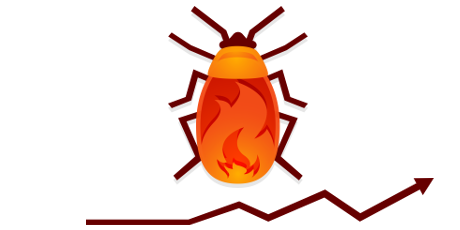

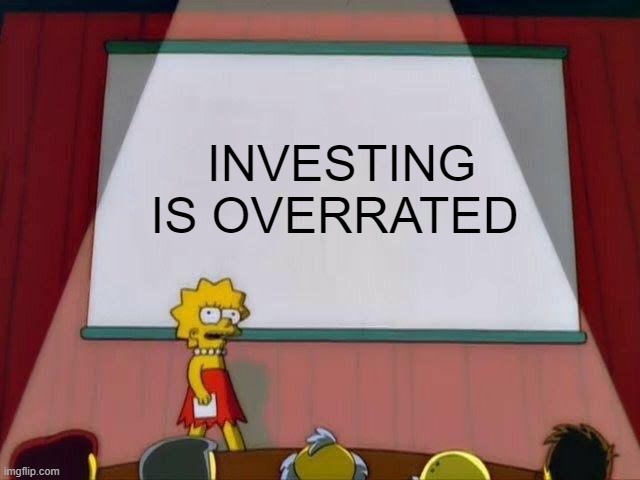
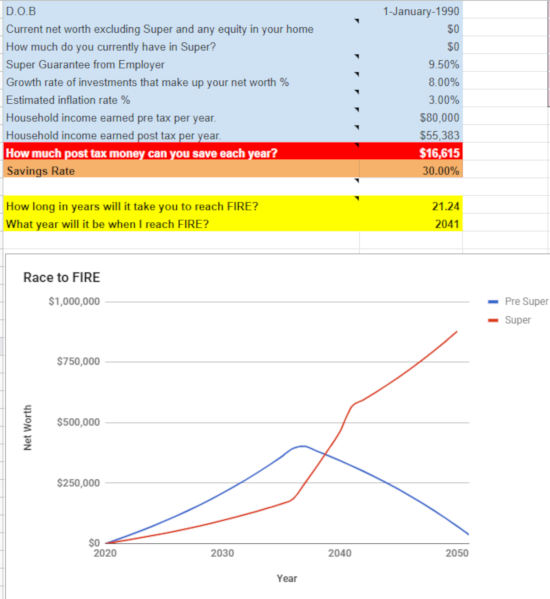
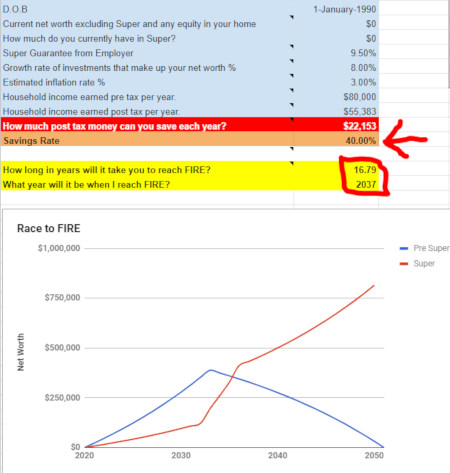
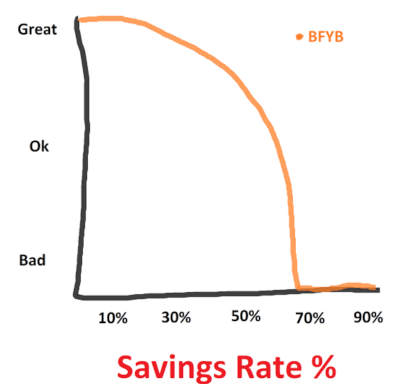
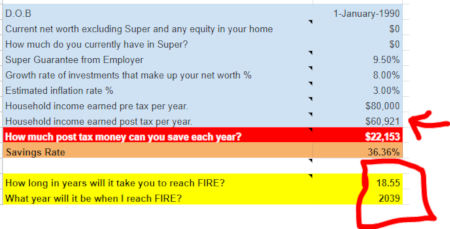
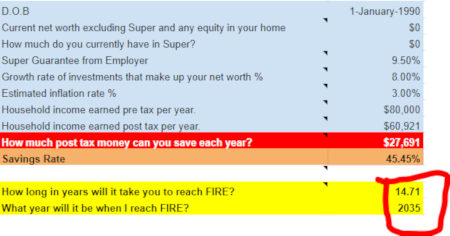
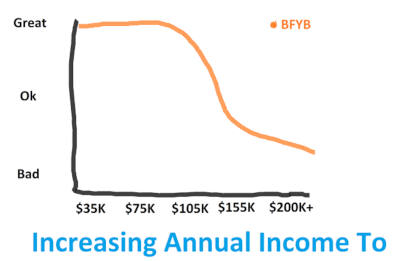
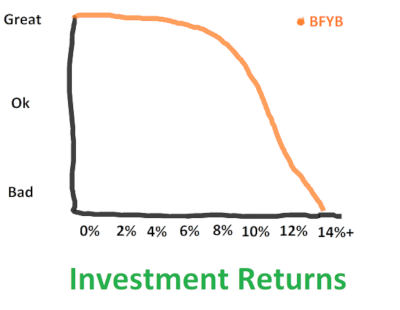
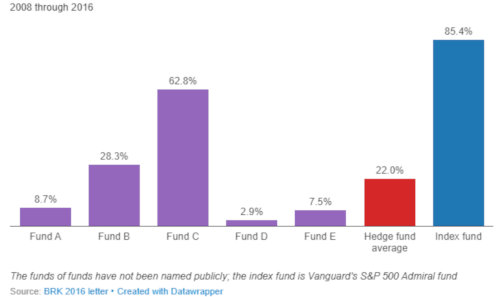
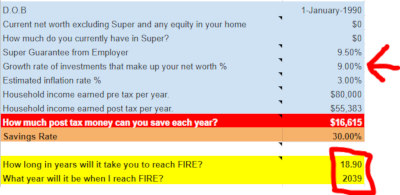



We have lost 40% of our income due to Covid, but amped up our side hustles, so now aren’t even noticing the pay cut. Can’t wait to get back to full pay and keep the side hustle income steady. That savings rate will be key!
Great metaphor 👏🏼
That sounds like a great routine to me 🏋️♀️💪!
Love the BFYB metric mate. Thanks again for such a great contribution to Aussie FIRE 📚🔥
My pleasure Kurt 😊
Great article mate! There’s far too much time spend on the minutae of stuff like which Aussie ETF fund is best instead of on the things that will make a difference like earning or saving more. We should be thinking about which decisions will actually make a difference and which are pretty much irrelevant.
💯💯💯
Warren Buffett said the “The best investment you can make is in yourself”. I was a partner in a big four consulting practice and the reason we got the consulting jobs is that we had the best team that could deliver what the client wanted. I can also tell you that the best consultants don’t get there by luck, they get their by investing in themselves. That means building good habits of constantly upgrading skills, learning new skills to tap into new markets and demonstrating those skills in the real world. Nothing improves the skills like tough real life engagements. The other very effective way of increasing income, is by starting a business so that you multiply the effect of working; eg in the consulting practice partners earning 20-30% of their consultants charge out rate. There are also really good techniques on handling stress, so life can still be enjoyable! Love your work.
Cheers John,
Wow, a partner at a big four! What type of Mclaren are you driving 🏎😁?
There were no doubt some really, really talented people in the London office but I have to admit, there was clearly a running theme (maybe it’s a London thing) of hiring young talented grads and working them into the ground for 5 years without paying them that much at all. I’m working with a lot of ex big-4 people at my current contract and they all have similar stories of doing their ‘time’ at the big-4 and then leaving to get paid a lot more with better work-life balance for a niche consulting firm/industry.
I’d love to have a crack at a business one day too. It would be great to be my own boss for once in my life.
Thanks for the comment John.
That was a nice long read. 100% feel the same about throwaway culture as you. It’s one of the worst aspects of capitalism/consumerism. I work in storage and logistics and the amount of plastic shrink wrap that is wasted in order for us to transport goods from one location to another is utterly mind blowing. Gumtree is a great place to buy goods and reduce contributing to landfill and I’ve made so much cash from selling things on there I thought were worthless and nobody would want!
Gumtree is my goto for nearly everything these days.
Funnily enough I met my now wife on Gumtree in London!
Lol nice!
I didn’t realise they had a dating section… or did you guys meet up when you sold something?
Back when I was a young(ish) whippersnapper in London in the mid 2000s they had a dating section, I think it’s been gone for a long time now though.
Maaaaate! Mate! What a great article! I’m not overstating this when I say it’s the most useful piece of investing/FI information that I’ve read. And I’ve just read Barefoot Investor, investing for dummies, investing online for dummies etc!
And none of those said look buddy, work more + save more (even if just a little) and don’t worry about learning how to be a stockbroker. Which is what I assumed I’d need to know.
Thanks so much, seriously I went from “stuff this, I’m just going to buy bonds and forget about FIRE” to “huh, it’s actually that easy” in the time it took to read this post.
Wow Daniel, that’s some big praise mate.
It really warms my heart to know people get something out of these posts so thanks for the good vibes 🙂
Way too many people try to complicate things when it comes to finances. It’s pretty bloody simple if you break it down.
All the best on your journey 👍
Such valuable knowledge! thanks so much for sharing. Your content is giving me the motivation I need to really kick start my FIRE journey.
Cheers cobba!
What a very muscular piece of content! A lot of folks get caught in the weeds of tiny details and things that don’t matter in the grand scheme of things.
As you say, definitely at the high end, going from 65% SR to 70% (like grinding out a last 1 or 2 reps?) gets pretty tough compared to juicing our income a bit. The only tricky bit is making sure we don’t resort to spending money money outside work to make our reduced free time more enjoyable – you’d probably see that from crazy-busy people in London?
I really like the point on momentum and just getting started with other projects/side hustles, especially as it could lead to what we end up doing in retirement.
You really went for the exercise theme, so I thought my comment should match, haha 😉
💪💪💪
I’ve been guilty of spending more money for the sake of convenience after a long day. There’s really something psychological about feeling the need to spoils yourself when you work hard. And I guess there’s nothing wrong with it but as we both know, it can be a huge trap to work your guts out all week only to spend everything you made on extravagant purchases during the weekend 💸.
Like most things in life, a balanced approached usually works best.
PS. Loved the latest FIRE & Chill pod mate. Keep em coming 🔥🔥🔥
Just adding to the matched betting testimony: I started in July with $1000 to play with after reading the blog and hitting up the bonusbank site to learn. With Covid hitting and work slowing down, a lot of my days were spent in my work office plugging away at bonuses on my phone. I’m officially at $12K profit in 3 months. Not a bad return at all. Unfortunately that can’t be sustained as I’m pretty much banned from all bookies now but hey, that’s $11K I didn’t have before!
That’s incredible Jack. Did you have to play the horses to get that much? I basically stopped after the sign-up bonuses and didn’t have the time to really continue it afterwards.
Great Post! Really important to focus on increasing income as well.
Just a few comments (my 2 cents). It would be good to risk profile the efforts you mentioned for bumping salary.
I increased my income pretty well but along the way lost a job a couple of times. So changing jobs and contracting are great but there is a higher risk involved in any change. I would say changing job is as risky as picking stock in investment so needs some due diligence, but it could have great returns. Also, the current COVID climate has been a bit tough on this front.
On starting an online business (YouTube or online shop), I have started a couple but sort of failed. The beauty of it was I learned a lot and lost time but no money and also learned something new to talk about. I think this point should be combined with a passion project. I myself am guilty of trying to produce content that I was not super passionate about. If we invest time in our passion for YouTube or any business it will pay off much more. I think that is why you have been successful, I don’t think other FIRE bloggers are necessarily as good as you; I can see the spark in your posts.
I also think one topic is being forgotten, working on relationships, and our emotional intelligence. On forums, people turn to robots talking about stocks but forget the power of connecting and growing together. After all, nowadays any skill or hot trend won’t last more than 4-5 years; so we should spend time on things that are not replaceable by technology ( ability to leverage our EQ and social connection).
Love the EQ talk.
Having a high EQ will serve you better than a high IQ every day of the week. When I was on hiring panels, we mostly looked for the best fit in the team. Yes qualifications are important and they should have some skills and experience, but it’s a lot more important most of the time to get the right person to fit into the team/culture than it is to hire someone who’s technically brilliant.
That’s been my experience anyway
Great article AFB.
I’ve been lucky to push my main job income to a high level in recent years (finance & economics background) and I side hustled into mortgage brokering which has been an awesome way to push the income side of the equation further…
Couple of additional points I think worth raising:
1) Agree re. trying to optimise structures although as your income levels grow having a side hustle via a company structure does wonders in avoiding having your marginal new side hustle income fall into the top tax bracket category… it also gives you a great way to push some lifestyle expenses into pre-tax company deductions which raises your effective savings rate
2) Agree re. rates of return on asset classes but one thing I’ve always challenged vs. the FIRE community is that return on invested capital (ROIC) isnt the same as return on equity (ROE)… so like your example, your IP gave you a rate of return way bigger than its underlying capital growth as you were able to utilise low cost debt (effectively lowering your weighted average cost of capital)…. there’s a good argument to be made that (safe) leverage to a certain point via residential property can achieve far greater returns than index investing for early stage investors –> you then diversify across to index funds as a phase 2 as you reduce your portfolio leverage over the medium term. The difference in rates of returns that can be achieved via this strategy is not nominal. I think people focus too much on trying to pick the best stocks to outperform the market 1-2% vs. focusing on balance sheet optimisation which can do far greater heavy lifting in growing wealth
Great comment mate. ROIC is a great metric. I hate when financial commentators use a blanket statement like “This property went up by $X and therefore had a Y% return”. Like… no one in the world invests in real estate without leverage so why are they crunching the numbers like that? 9/10 it’s a pro shares commentator. And to be fair, pro-property people usually use similar tactics against the share markets. I don’t get the whole this or that camp stuff
I don’t want to sound overconfident but… *Insert seductive Liam Neeson voice*
“What I do have is a very particular set of skills, Skills I have acquired over a very long career. Skills and experience that the market is willing to pay me and I’m 99% sure I could land a job paying close to $100K no worries “
😂😂😂
Nice Post, I noticed in your examples you had the persons Super at $0.
Would the results be sooner if this had a starting balance?
We all might be getting to this our fire number sooner as if this increases beyond the 9.5% as planned. This will be all giving us that little bit of extra forced saving.
Cheers,
Yes the results do change if I increase Super. That calculator is free to download so you can play around with the numbers as much as you want 👍
This is an inspiring list of FIRE article—thanks for posting! We have recently started blogging our own journey, and we love finding others who share our desire for striking the right balance in the process. Kindly visit our website for more details. https://fireandmatch.com/
Hi mate,
Solid work over the years. Good thought starters for setting yourself up for early success.
One for me:-
When you mention you’ll hopefully retire in a couple of years. Your net worth is currently around $800k (including investment property value). You also note you’re looking to purchase a PPOR before you retire, have children and still have enough cash generating investments left over to live off.
I live in Sydney so might be struggling to see how the math works out.
Please note I’ve learnt a lot from following your material and view it as incredibly insightful & helpful. I’’m not challenging you, am just curious.
Am I missing something? How do the numbers work out?
Great question Ads,
A lot of my assumptions depend on the market returning 8-9% for the next two years and no hiccups or anything (which probably won’t happen 😅).
But the numbers roughly look like this:
Total assets excluding Super (as of when I’m writing this) ~ $740K. And I’m quietly confident that both of the property investments are actually worth more than their last valuation that was done back in 2018.
I’ve got a bonus coming in at the end of December that’s worth ~ $40K AUD plus two more months worth of wages and any potential gains from the markets (may also be losses but hear me out).
I wouldn’t be surprised if we finish 2020 at around $800K. Based on previous years (in terms of how much we save annually when in Australia), I would guesstimate that we will be able to pour on another $140K between 2021-2022 which brings us up to $940K. Add on market gains (at 9%) and we should be somewhere in the vicinity of $1,096,772. Add in any other gains I think we’re going to get from the properties and it’s a realistic goal to have $1.25M invested by the end of 2022 which is more than we need to be FI going off the 4% rule.
Buying a house will mean taking out some of that money to make a deposit, but I’m hoping that whatever we spend on the mortgage will offset the amount we had to pay in rent. So if we’re currently spending $48K a year but then buy a house with a 20% deposit, we will have less money invested and won’t have as much passive income but the net costs for the year (specifically living costs) will theoretically go down because we have some capital against the home loan. This of course depends on so many factors like the cost of the house, interest rates, the difference between renting and buying in the country etc.
And then the big one… KIDS!
I have no idea how much kids are going to cost. And although we want kids, I don’t want to jinx things. If it happens, it happens. And I’ll adjust the budget accordingly but for now, if everything goes the way I have described above, we should be FI within 2 or so years… maybe 3… or maybe 10 if a huge crash wipes out the market for years 😂
Take everything with a grain of salt but yeah, that’s the plan 🙂
Thanks for taking the time to explain it all mate. Best of luck with it all and the coming few years to hit your goal. A realistic balanced approach with some optimism thrown in there. I like it
I’ve been following your blog and podcast for a while now, and this is a great summary. Now 54 years old, I only wish I had discovered FIRE earlier. Always been a good saver, but like you thought there was a magic formula, or that FIRE wasn’t even really possible. Fortunately I love my job, but to be able to choose to retire when I’m 60 is a reachable goal. Thanks for all the content.
Thanks Annabel 🙂
Hi AFB,
I’m a new reader and loving your content! I’m really interested in learning more about why you invested in Milton (your only LIC)?
I am keen to start the ball rolling on A200 and VGS. However considering a couple LIC but not sure yet.
Thanks Liza,
I really like both ETFs and LICs. They are both suitable products to reach financial independence IMO. The main reason I only have one LIC (and probably will sell that eventually) is that I think franking credits will eventually be removed and the active management in LICs scares a just a little. So it’s easier to just go with ETFs for me. The most important thing is to get that ball rolling though 🙂
Good luck!
Thanks AFG!
Additionally, a quick question relating to getting the ball rolling. I’ve been hesitant to start investing right now because I see for example the ASX200 and other ETFs is at near all time highs. I plan to DCA similar to yourself and plan to hold long term (until past pension age etc) so I was wondering your thoughts?
Thanks AFG!
Additionally, a quick question relating to getting the ball rolling. I’ve been hesitant to start investing right now because I see for example the ASX200 and other ETFs is at near all time highs. I plan to DCA similar to yourself and plan to hold long term (until past pension age etc) so I was wondering your thoughts?
Thanks heaps!
Hi AFB,
I’m a new reader and loving your content! I’m really interested in learning more about why you invested in Milton (your only LIC)?
I am keen to start the ball rolling on A200 and VGS. However considering a couple LIC but not sure yet.
Thanks a lot
Also, I returned from two years in London in Feb 202. Reckon you’ll love the sunshine!
AFB, fantastic content once again mate! I’m a bit late to discovering this blog post, but it was a pleasure to read! Made me think of the long, rambling, highly opinionated, but very valuable content you first produced when I discovered your site five years ago. Some awesome stuff my friend.
I’m a huge believer in increasing earnings. Personally, I moved from a stable high paying salaried position, to one that was still in the same field, but more commission based. I ended up doubling my take home pay, and in some good years, even even tripled it. That was a huge factor in increasing my savings rate, buying a home, and being able to raise a couple of kids the past few years!
One thing to add to the conversation. I’ve gotten huge value out of reading the ESI Money blog (Earn, Save, Invest). He heavily features content on increasing the earnings side of the savings equation, and I especially love his Millionaire Interviews, so you can read first hand how people earned their money and built their careers over time.
I have no affiliation, I just really enjoy his content and have gotten immense value out of it over the years. Some relevant links for people to check out:
– https://esimoney.com/ten-best-ways-to-earn-money/
– https://esimoney.com/category/earn/
– https://esimoney.com/category/millionaires/
Thanks again for all you do for the Aussie FI community!
Thanks Papa!
It’s amazing what you can discover when you’re out of your comfort zone. I’m so glad we went on our big trip when we did. Really opened my eyes up to what’s possible out there. I’ll check out those posts, thanks for sharing 🙂
Cheers
Thanks mate! Loving the content so far, I started reading MMM which I’m also loving but like you said, so many different rules and circumstances for us in Australia compared to the states.
No worries Kade, I’m glad you’re liking the content 🙂
Great article about the trade offs between our efforts in achieving fire and our results. We need to find a happy medium. Also, love the graphs! Found some related ones at this other fire site: https://www.askthesavingsguy.com/2021/09/18/why-youll-never-retire-unless-you-f-i-r-e/
Hey AFB
I’m really new to FIRE and loved this article!
I have a question relating to ‘savings’. We currently pay about $900 off the PRINCIPAL of our residential home loan. From a FIRE perspective is this considered part of our’savings’ amount per month? All our other money is offsetting our mortgage at 2.4% but thinking this could be put to better use in EFTs and shares.
Cheers
I would consider it part of your savings… but that’s just me. Some people don’t.
Oh, and I’m glad you enjoyed the article 🙂
Great article AFB! You’re right about increasing your income – there’s so many opportunities out there, and sometimes you just have to highlight your value! I approached my boss numerous times about a pay rise, reminding him how valuable I was to his company – he obliged in most cases – sometimes we came to a compromise where he agreed to a lesser rate but paid for all my petrol – worked for me at the time! I’m also a huge fan of selling items online – or selling other people’s items too! Sometimes this pays for my groceries for the week, meaning I can invest more. I also recommend entering competitions here and there – you just never know! I was lucky enough (and persistent enough) to win a brand new car on the radio! It was perfect timing too.. I’m currently working on the blog and learning more about online business.
Thanks Liz,
The internet has created sooooooooooo many opportunities! I love that you know your worth too. The amount of people who are underpaid because they’re afraid of being confrontational is extremely high. Congrats on the car too 🎉
Fantastic article! It makes so much sense to try and maximize your earnings while trimming expenses. Initial savings that have decades to compound really adds up over time versus trying to save aggressively later on in life.
I 100% agree with this. If I had to choose one aspect of personal finance and investing to be really good at, it would be income. It gets you out of so much trouble. Make a bad investment? Have an emergency expenditure? Doesn’t matter if your income is high. You can’t save yourself wealthy.
Thanks for this mate. Just what I needed, really appreciate this information.